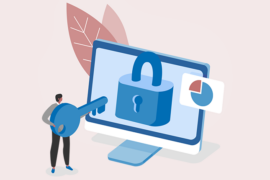Thanks to the Internet, the way we work has changed a lot. We can now stay connected and flexible, no matter where we are. This has given rise to something called the gig economy.
In the gig economy, people have more freedom to earn a living. They don’t have to stick to a regular 9-to-5 job anymore. Instead, they can take on short-term projects whenever they want or need to. It’s a new and exciting way of working!
So, why is the gig economy such a big deal for the future of work? Well, it offers great opportunities for both businesses and workers. Businesses can tap into a wide pool of talented individuals whenever they need help with specific projects. On the other hand, workers can enjoy the flexibility to choose the projects they want to work on and when they want to work on them.
What is gig economy
Have you ever used an app to hire a freelance taxi driver, book a vacation rental, order food, or buy homemade goods? These are all examples of the gig economy. It includes various roles like freelancers, consultants, independent contractors, and temporary workers. In simple terms, the gig economy is about people offering their services through digital platforms on a short-term basis, and customers pay for what they need.
In recent years, the gig economy has grown rapidly, especially with the arrival of different apps that cover various service industries. The COVID-19 pandemic has further boosted the gig economy as people prefer home deliveries and minimize physical contact. According to a report by Mastercard, global transactions associated with the gig economy are projected to grow by 17% annually, reaching around $455 billion by 2023.
As the gig economy expands and more companies adopt this model, there is a challenge for policymakers to strike a balance between job-creating innovation and ensuring fair treatment for workers. The UK government, for example, recognizes that gig workers value their independence and career flexibility. The gig economy has also become an important source of income and job opportunities for students, working parents, and individuals who have other responsibilities like caregiving.
Examples of a gig economy
One of the most notable aspects of the gig economy’s freelancing. Thanks to the Internet and the availability of vast amounts of data, the gig economy has emerged and expanded into practical services that people can actively utilize. Nowadays, all it takes is an internet connection to initiate a deal or carry out a transaction.
Numerous companies, such as TaskRabbit, Fiverr, and Handy, participate in the gig economy. They typically prefer to operate through ratings-based online marketplaces, offering secure payment systems in the form of custom or specialized apps. Additionally, the advent of cloud platforms has simplified the process of connecting independent workers, employees, and customers, facilitating smooth collaborations.
Several apps have been designed to assist gig workers in maintaining their workforce flexibility. For instance, Upwork is a platform that caters to freelance services, while Airtasker helps users create to-do lists and manage tasks efficiently.
When it comes to specific examples of gig economy apps, Fiverr serves as a prominent platform for freelance services, TaskRabbit specializes in home improvement projects, and Uber has revolutionized the transportation sector.
These apps, among many others, have transformed the gig economy jobs by providing user-friendly platforms that seamlessly connect service providers and customers.
How does the gig economy align with the future of work?
Thanks to the rise of online platforms, gig workers participating in short-term digital tasks now typically receive payment after each assignment. According to a recent survey by Manulife Investment Sentiment Index (MISI), approximately 31% of professionals engage in such gig work, either part-time or full-time.
Gone are the days when freelancers and Independent contractors had to invest substantial time building their professional reputation before earning income. Today, digital platforms that form the foundation of the gig economy’s take care of this aspect. These platforms offer transparent tools for customer assessment, efficient mechanisms for resolving disputes, and thorough verification processes, alleviating user concerns and minimizing barriers to entry in various sectors of the economy.
The success of Uber serves as evidence that the gig economy not only functions effectively but also aligns with the future of work. Many companies now consider temporary contracts with freelancers possessing unique skills as a more sustainable long-term strategy for adapting to evolving market demands, rather than constantly retraining permanent employees.
The New York Times emphasizes that in this era of rapid technological advancement, complacency is no longer affordable. Market needs are constantly changing due to accelerated technological progress. This implies that traditional career growth can be more challenging, especially for gig workers. Without a well-defined career path, their achievements on one platform are often not recognized by others. Nevertheless, gig work helps them remain up-to-date with their skills.
Communication tools like Skype and WhatsApp have reduced the cost of international communication, while prestigious universities offer free access to thousands of world-class courses on online platforms. A wealth of information is now just a click away, making it possible for the gig economy to become associated not only with low-skill service industry jobs but also with highly skilled independent workers.
The movement of ideas, goods, money, and people contributes to the growth of the global economy, and the gig economy’s serves as a catalyst for that movement. Employers now have unparalleled access to the talents required for enhancing their businesses, along with communication tools that enable effortless connections with potential workers, customers, and partners worldwide.
Advantages and Disadvantages of the Gig Economy for Businesses
Determining the precise number of working adults engaged in the gig economy can be quite challenging. According to the Bureau of Labor Statistics (BLS), around 1.6 million individuals derive additional income from gig economy work. Interestingly, many gig economy workers view it as a supplementary source of income alongside their primary or full-time employment.
For gig workers
Workers in the gig economy enjoy several advantages, including:
- Performance-based higher earnings
- Flexibility in working hours, allowing them to choose when and how much to work
- Opportunities to work from any location, independent of a specific geographical constraint
- A wide range of gig platforms available across various industries.
However, alongside these benefits, there are also certain drawbacks to consider:
- Absence of traditional employee benefits like health insurance or paid leave
- Feelings of isolation and a lack of a strong sense of belonging or identification with a particular company.
- More stress
For organizations
The gig economy’s can also bring several advantages to employers:
- Cost savings resulting from innovative employment models
- Reduction in expenses related to recruitment, hiring, and interview processes
- Access to a diverse pool of talent with varying skill sets.
However, it is important to be aware of certain challenges:
- Stringent regulations regarding the classification of workers as contractors in certain jurisdictions.
- Reduced levels of loyalty and commitment from gig workers towards the organization.





